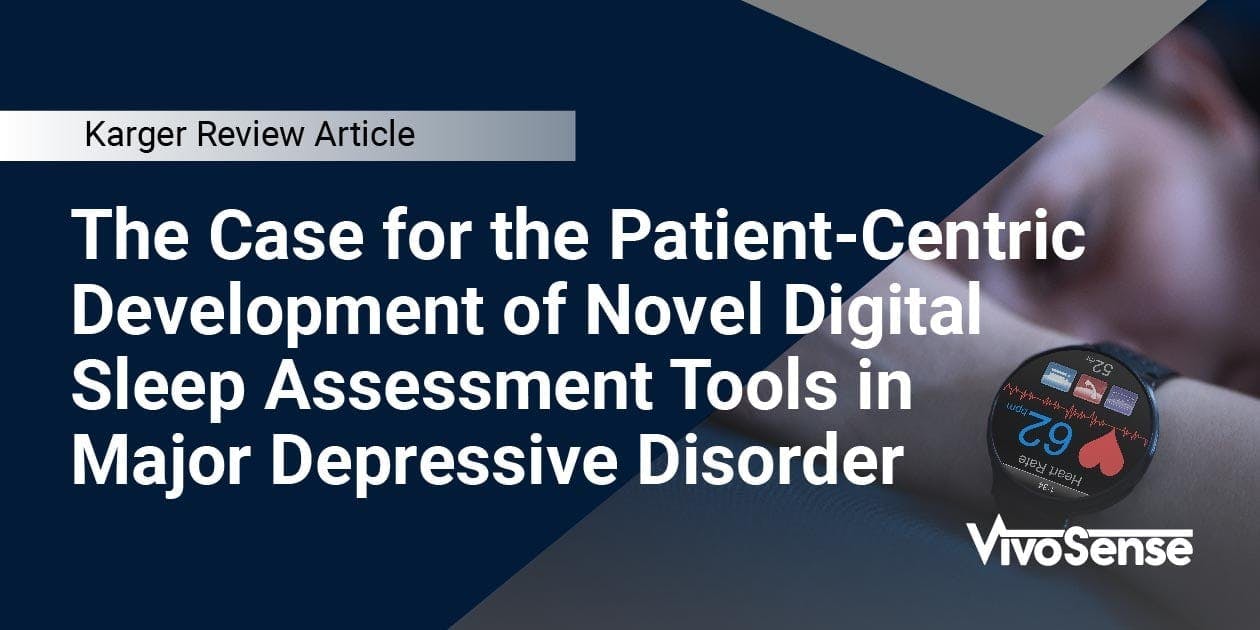
VivoSense published a Karger review article, The Case for the Patient-Centric Development of Novel Digital Sleep Assessment Tools in Major Depressive Disorder.
Background
Depression imposes a major burden on public health as the leading cause of disability worldwide. Sleep disturbance is a core symptom of depression that affects the vast majority of patients. Nonetheless, it is frequently not resolved by depression treatment and may even be worsened through some pharmaceutical interventions. Disturbed sleep negatively impacts patients’ quality of life, and persistent sleep disturbance increases the risk of recurrence, relapse, and even suicide. However, the development of novel treatments that might improve sleep problems is hindered by the lack of reliable low-burden objective measures that can adequately assess disturbed sleep in this population.
Summary
Developing improved digital measurement tools that are fit for use in clinical trials for major depressive disorder could promote the inclusion of sleep as a focus for treatment, clinical drug development, and research. This perspective piece explores the path toward the development of novel digital measures, reviews the existing evidence on the meaningfulness of sleep in depression, and summarizes existing methods of sleep assessments, including the use of digital health technologies.
Key Messages
Our objective was to make a clear call to action and path forward for the qualification of new digital outcome measures which would enable assessment of sleep disturbance as an aspect of health that truly matters to patients, promoting sleep as an important outcome for clinical development, and ultimately ensure that disturbed sleep will not remain the forgotten symptom of depression.
